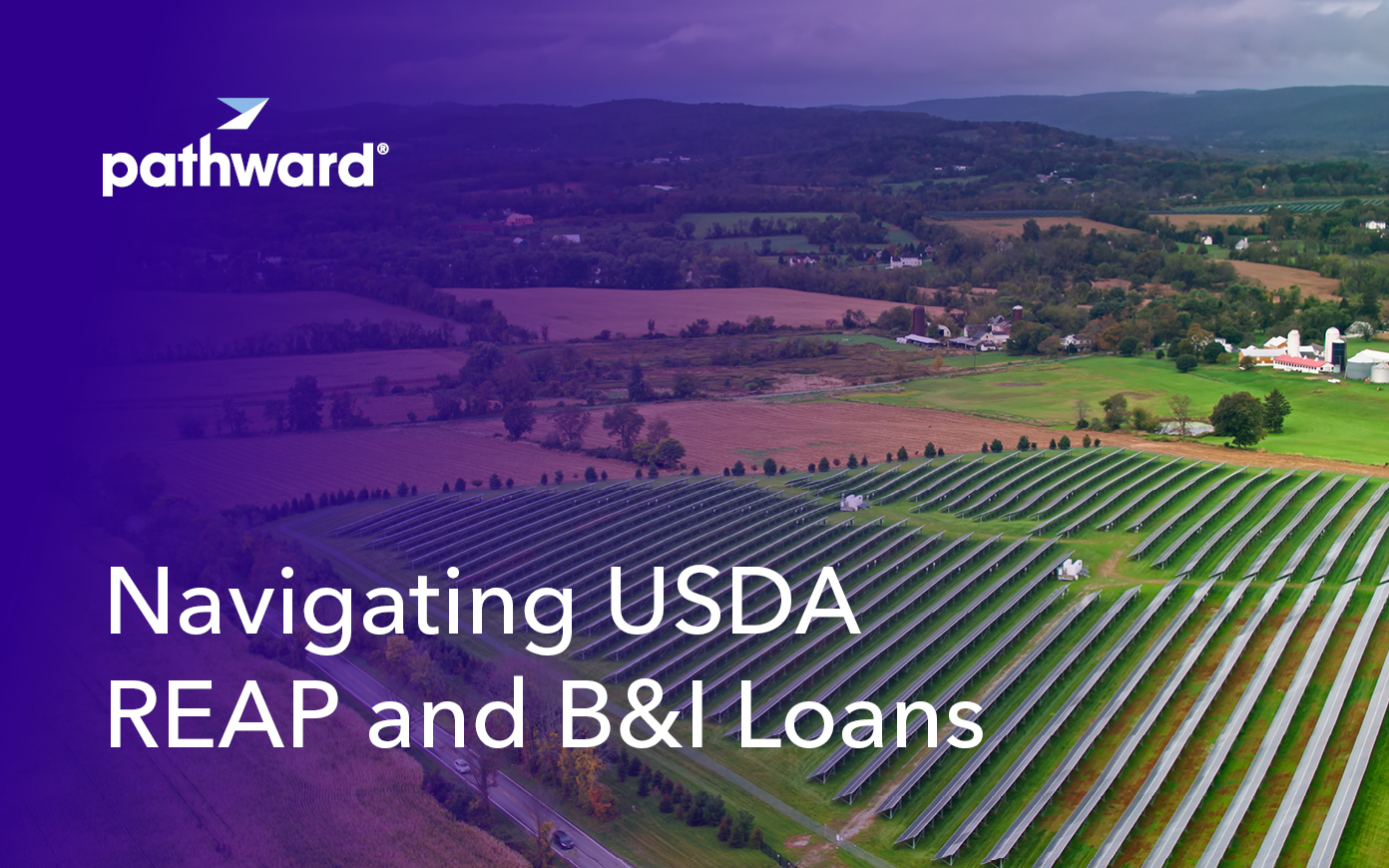
FDIC-Insured - Backed by the full faith and credit of the U.S. Government
- Investor Relations
- Careers
-
Login
- Online Banking
- Commercial Finance
Navigating USDA REAP and B&I Loans – A Guide

Businesses operating in rural environments can face resource challenges for a variety of reasons. Financing is often vital, and to support these businesses, the United States Department of Agriculture (USDA) collaborates with local organizations and financial institutions by offering, among others, two key programs: Business and Industry (B&I) and Rural Energy for America Program (REAP) loans.
Understanding the details of these programs including eligibility, application procedures, and notable differences is valuable to successful loan acquisition.
Understanding USDA Business & Industry Loans
The USDA B&I loan program is intended to help stimulate and improve the economic and environmental climate of rural areas by providing loan guarantees to businesses through commercial lenders. The USDA leverages existing credit structures (e.g., commercial lenders) to increase loan quality, support a wide range of business needs, and create sustainable partnerships between local borrowers and financial institutions.
B&I loan guarantees support financing up to $25MM for business use, including but not limited to:
- Business Expansion: Acquisitions, Expansion, Mergers
- Debt Refinancing: Replacing existing debt under certain conditions
- Equipment: Purchasing, upgrading, and installation of equipment and machinery
- Real Estate: Acquiring, developing, or improving land and buildings
- Working Capital: Funds for operations and expansion – to create or save jobs
Understanding REAP Loans
REAP loan guarantees support financing for renewable energy systems (RES) and energy efficiency improvements (EEI) in rural areas. While narrower in focus than the B&I program, it plays a significant role in driving innovation and energy independence.
The REAP program provides financing up to $25MM for businesses and award grants up to $1M to agricultural producers, rural small for-profit businesses, co-ops, and tribal businesses to facilitate the purchase of the following:
- Renewable energy systems like biomass, geothermal, hydrogen, solar, and wind
- Energy efficiency improvements such as HVAC, insulation, lighting, windows, and doors
What are the key differences and similarities between B&I and REAP Loans?
While both programs mostly target rural businesses, they have unique eligibility requirements and scopes. A side-by-side comparison shows the key similarities and differences.
USDA Business Loans Eligibility
Category | B&I | REAP |
Area | Must operate in rural areas (>50,000 or fewer pop.)
Exception: Borrower’s HQ can be based in larger city. Project must be in eligible rural area. | Must operate in rural areas (>50,000 or fewer pop.)
Exception: Agricultural producers do not have a rural population limit. |
Borrowers | Cooperatives, For-Profit Entities, Federal Tribes, Non-profits, Public Bodies | Agricultural producers and small businesses (as defined by the federal code), including the following:
Cooperatives, Electrical Utilities, Private for-profit entities, and Federal Tribes |
Equity | Variable 10-20% project or balance sheet equity depending on business type |
|
Fees | 3% of guaranteed amount .55% of outstanding principal balance per year | 1% of guaranteed amount, .25% percent of outstanding principal balance per year |
Personal/Corporate Guarantees | Guarantee for all owners with more than 20% stake | Guarantee for all owners with more than 20% stake |
Max USDA Guaranty | 80% | Can cover up to 75% of total eligible project costs with an 80% guarantee
|
Loan Purposes and Requirements
Category | B&I | REAP |
Primary Focus | General business purposes | Renewable energy projects and energy efficiency improvements |
Eligible Projects |
|
|
Restrictions | Certain ineligible loan purposes, such as churches or church-controlled organizations, gambling, golf courses or golf course infrastructure, and lines of credit | Projects must involve RES or EEI |
Examples of Projects |
|
|
Additional Requirements |
|
|
Loan Application
Both programs have specific application requirements, which can vary based on the scope and type of project. The following chart summarizes the primary requirements for each program to help you understand the key elements needed for a successful loan application.
Category | B&I | REAP |
Application Components | Description of business, business plan with financial projects, project scope, and details of loan request | Description of business, business plan with financial projects, project scope, and details of loan request |
Financial Requirements |
|
|
Application Submission | Must be submitted through approved lenders | Must be submitted through approved lenders |
Approval Process | Reviewed by USDA staff in conjunction with approved lenders* | Reviewed by USDA staff in conjunction with approved lenders* |
Processing Time | Approx. 60-90 days
Environmental assessments and audits may be required, adding time to processing. | Approx. 60-90 days
Environmental assessments and audits may be required, adding time to processing. |
Loan Terms
Category | B&I | REAP |
Loan Terms* | Varies based on loan purpose:
| Varies depending on project type:
|
Interest Rate | Determined by the approved lender, often variable rates tied to market rates (Lower rates available for businesses with strong credit) | Competitive rates, may be tied to market rates |
*Note, loan terms can vary based on factors, such as loan size, type of project, risk profile, and current economic conditions.
USDA Loans with Pathward
Pathward has been financing rural development projects since 2016 . Our team of industry veterans are experienced in financing commercial renewable energy systems, and we collaborate with the USDA to address compliance and eligibility issues before our clients submit their applications, ensuring a smooth and more efficient process. This proactive approach minimizes delays and increases the chance of success for our clients.
For more information on rural development funding and renewable energy financing, please reach out to our Structured Finance Team.


